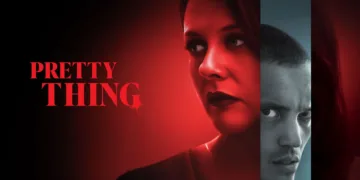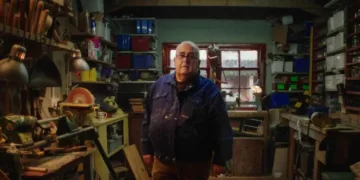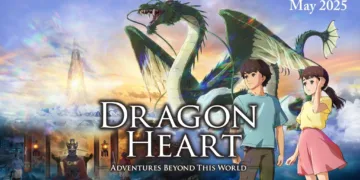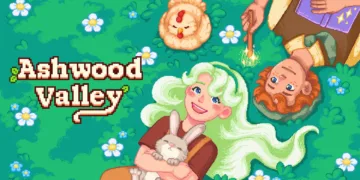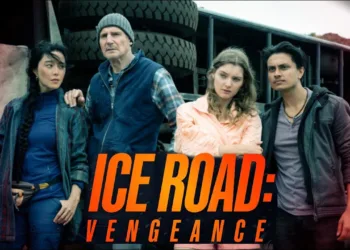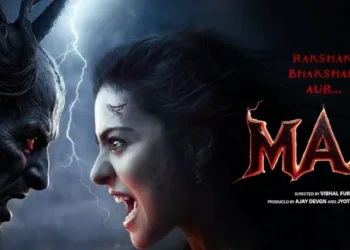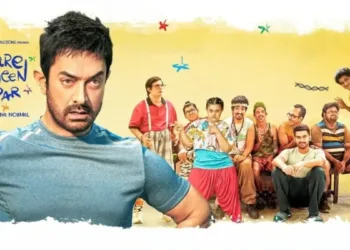“In the Arms of the Tree” occupies a distinct niche in Iranian cinema. It presents a narrative that, while modest on the surface, prompts reflection on societal shifts. Its selection for the International Oscar category hints at a recognition that transcends the ordinary (one might compare this to the subtle political nods of films from previous eras).
Director Babak Khajehpasha steps onto the scene with a debut that is both earnest and quietly ambitious. His background, marked by an evident passion for storytelling through visual poetry, informs a work that surprises with its careful observation of familial microcosms. The film earned accolades that have set a promising tone for his future projects, hinting at a talent that is not afraid to question established norms.
Set against the rustic panorama of rural Iran, the film mirrors the social fabric of a country where family ties and communal values often conflict with the emerging pressures of modern life.
It sketches a portrait of domestic disarray—a divorce that disrupts not only individual lives but also an intricate network of cultural customs. (There is a wry nod to history in how personal discord reflects wider social shifts.) This setting serves as both a stage and a silent commentator on the challenges faced by traditional households today.
Plot Dynamics and Symbolic Unraveling
The film’s narrative pivots on the decision of a couple, long entwined in a shared life, to part ways—a move that sends ripples through their tightly knit family. The dissolution of their union precipitates a heart-wrenching dilemma: the planned separation of two brothers whose bond defies easy division.
One cannot help but observe a striking parallel here with historical fractures in society where the severing of once-indivisible ties has left communities scrambling for coherence (a situation that may remind one, in a dryly humorous way, of a disassembled jigsaw puzzle missing a few key pieces).
The screenplay orchestrates its pace with deliberate care, interspersing languid moments with abrupt escalations. Among the key scenes, a perilous game on train tracks stands out—a scenario laden with ominous undertones, hinting at the fragile nature of youthful innocence.
Equally significant is the enigmatic white balloon, whose ascent into the canopy functions as a visual harbinger of impending change. These carefully crafted sequences signal the film’s commitment to a narrative that slowly tightens its grip on the viewer (think of it as the cinematic equivalent of an unfolding time bomb).
The structure of the film transitions smoothly from an unassuming family portrait to a charged, emotionally intense drama. This evolution is achieved through a gradual revelation of symbolic cues and an attentive depiction of nature. Every frame seems to suggest a duality—a literal depiction of the serene countryside set against the undercurrents of familial discord. (I coined the term “symbolic cadence” here to capture how these elements beat in rhythm with the characters’ inner turmoil.)
The narrative does not simply follow a linear path; it meanders through moments of quiet reflection and sudden crisis, engaging viewers in a conversation about the repercussions of disintegration on both personal and societal levels.
Faces and Fault Lines: A Character Analysis
Kimia emerges as a portrait of internal conflict. Her mysterious ailment mirrors the weight of unsaid truths that permeate her existence—a quiet, almost metaphysical burden. One senses her internal landscape is riddled with unspoken fears and a profound weariness (a sort of psychological attrition). Farid, in contrast, juggles contradictory impulses.
His affection for Kimia clashes with the demands of his commercial pursuits and his flirtations with a younger colleague, crafting a character caught between affection and self-interest. This juxtaposition exposes the tension inherent in personal responsibility versus personal desire—a microcosm of broader societal shifts where traditional roles are reexamined.
The relationship between Taha and Alisan adds another layer of complexity. Their bond is portrayed as an inseparable link, each brother a mirror of the other’s innocence and vulnerability. Taha, burdened with the role of protector, evolves in subtle yet noticeable ways. His journey reflects the painful process of growing up in an environment where family disintegration looms large. A curious mix of resilience and fragility characterizes his actions, suggesting that maturity sometimes comes wrapped in the cloak of sorrow.
Then there is Uncle Reza—a character whose contradictory behavior offers a rich vein of analysis. His apparent warmth and genuine care for the boys are sharply undermined by his imprudent antics and occasional exploitative tendencies.
His duality not only heightens the tension within the household but also serves as an allegory for the unpredictable forces that disrupt stable social arrangements (what I term the “Reza Paradox”). His presence in the narrative injects a touch of chaotic realism, challenging the viewer to reconcile compassion with caution.
Symbolic Landscapes of Family and Innocence
The film presents family unity as a fragile construct easily unraveled by separation. The narrative portrays divorce as a rupture that sends tremors through every member of the household (think of a falling row of dominoes in slow motion).
The disintegration of marital bonds is rendered with a quiet gravity, reminding one of historical splits in societies where the collapse of one institution invariably unsettles others. There is an inherent irony here: personal decisions ripple outward, challenging the very fabric of communal life.
Childhood appears as a domain of pure, unblemished emotion—a stark contrast to the calculated maneuvers of adult life. The relationship between the two brothers is cast in a light that elevates their shared innocence.
Their connection stands as a living metaphor for purity under siege; their vulnerability in a world where familial discord looms large is both heartwarming and, at times, sharply amusing (one might liken it to watching a pair of mischievous philosophers in miniature). Yet, one wonders if their bond can survive the pressures of a fractured household, a question that mirrors the uncertainty found in the annals of social transformation.
Nature, in its quiet omnipresence, functions as a mirror to the characters’ inner turmoil. Trees and open fields, bathed in gentle sunlight, create a visual rhythm that underscores the film’s emotional tempo. Specific images—a white balloon drifting upward, a flock of baby ducks, and the unsettling depiction of weathered sheep—serve as signals of forthcoming change.
These elements are not mere decoration; they pulse with symbolic meaning, offering visual cues to the evolving state of the family dynamic. A careful observer might call this approach a form of “visual semiotics,” a term I coined here to describe the interplay between imagery and sentiment.
Luminous Landscapes: Cinematography and Visual Aesthetics
The film employs extended takes and natural lighting to evoke an aura of unspoiled youth and understated tension. Its portrayal of the Iranian countryside is nothing short of captivating, presenting a serene backdrop that accentuates the emotional cadence of the narrative. Each lingering shot appears meticulously planned, inviting the viewer to savor the subtle interplay between light and shadow (a visual sonnet, if you will).
Nature is not merely a backdrop here; it is an active, almost sentient participant in the unfolding drama. Trees, fish farms, and vibrant market scenes populate the frame, each element echoing the inner conflicts of the characters.
The natural settings mirror the mood shifts—quiet moments of introspection and sudden bursts of tension. These scenes speak in a language of their own, a sort of “environmental semiotics” that captures the silent dialogue between the landscape and human emotion.
The film’s technical craftsmanship is evident in its fluid camera work, thoughtful framing, and a distinctive color scheme that adjusts subtly to signal narrative shifts.
The cinematographic choices create a refined balance, marrying the aesthetic appeal of natural vistas with a precision that heightens narrative awareness. (I refer to this as “visual orchestration”—a term that reflects the director’s talent in coordinating image and sentiment.) The result is a viewing experience that challenges the mind even as it pleases the eye, leaving a lingering impression of both beauty and introspection.
Resonant Echoes: Sound, Pacing, and Directorial Style
The film’s soundscape is a subtle, yet potent, force. Atmospheric music and carefully placed sound cues deepen the emotional layers of pivotal scenes. One encounters moments where the rustle of leaves or a distant train hum transforms a simple visual into an experience that prickles the skin with quiet dread (a sonic whisper of what might come).
The narrative unfolds at a measured pace—quiet intervals invite introspection, while sudden bursts of activity jolt the audience awake. This deliberate rhythm crafts an environment where suspense gradually intensifies, drawing viewers into the inner worlds of the characters. At times, the pacing seems to mirror the heartbeat of a nation weathering change—unhurried yet determined.
Director Babak Khajehpasha makes choices that blend thematic subtlety with visual eloquence. His approach to mixing sensory cues with a carefully structured tempo creates a tapestry of emotions that speak to both personal trials and collective experiences.
The resulting interplay between sound, tempo, and visual cues is both intellectually engaging and emotionally stirring (a sort of “directorial dialectic,” if you will). Such artistry invites reflection on not only the intimate narrative but also on the shifting contours of societal life.
The Review
In the Arms of the Tree
Babak Khajehpasha’s debut offers a thoughtful study of fractured family bonds and nature’s quiet influence. Its measured pace and symbolic visuals evoke a mood that mirrors shifts in society, while the subtle soundscape and precise imagery heighten emotional depth. This modest exploration of human connections and cultural currents leaves a memorable mark.
PROS
- Engaging visuals and natural imagery
- Thought-provoking narrative on family dynamics
- Poignant soundscape enhancing key moments
- Well-developed characters with subtle complexities
CONS
- Some viewers may find the pace too deliberate
- Symbolism can be understated at times
























